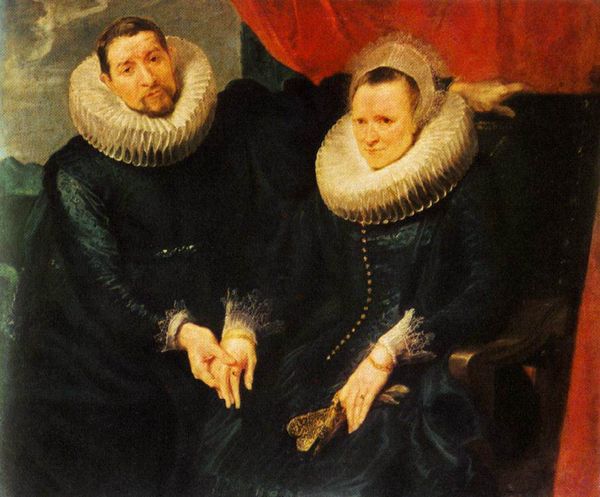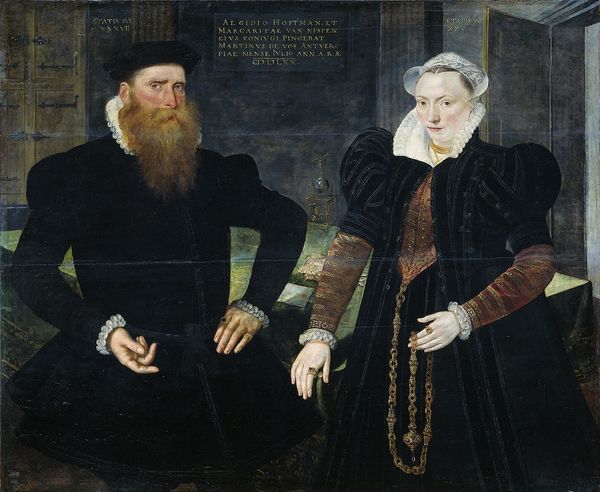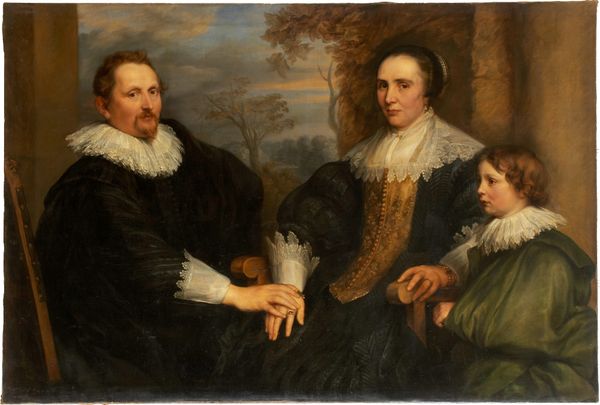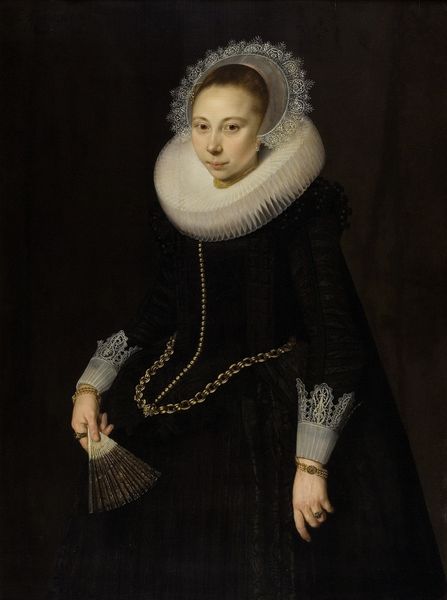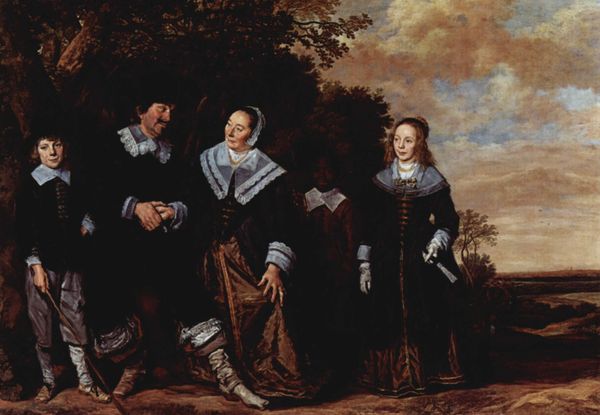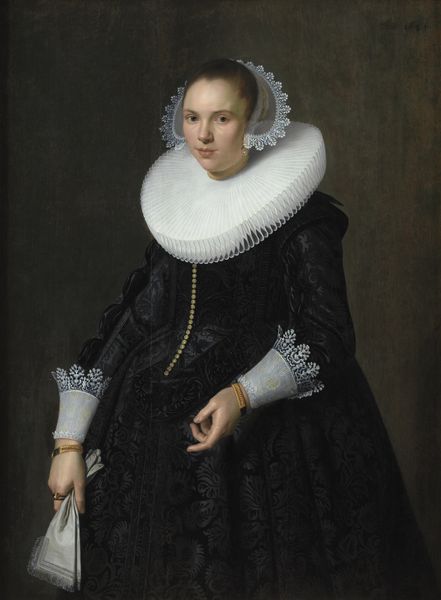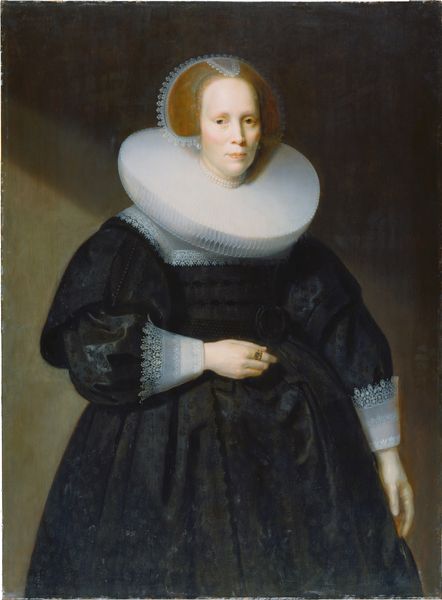
oil-paint
#
portrait
#
baroque
#
dutch-golden-age
#
oil-paint
#
oil painting
#
group-portraits
Copyright: Public Domain: Artvee
Editor: Here we have Anthony van Dyck’s "A Married Couple," from around 1620, rendered in oil paint. The most striking thing to me is the sheer volume of material in their clothing. How do you interpret this work? Curator: It's fascinating to consider the immense labour involved in producing and maintaining those garments. Think about the cultivation of flax for the linen ruffs, the weaving, bleaching, and intricate lacework. The sheer quantity of black fabric suggests access to specific dyestuffs. And the gold thread in the woman’s bodice wasn’t available to everyone. Editor: So the clothing speaks to their social standing? Curator: Absolutely, these garments are loaded with social meaning, a display of wealth through conspicuous consumption, a celebration of global trade networks. Beyond their economic capital, however, look closely. What do you notice about the treatment of their hands? Editor: Well, they are holding hands. They appear less detailed. Curator: Precisely. Van Dyck prioritizes capturing the texture and detail of the fabrics. It begs a question about how this couple valued their representation through possessions compared to their shared emotionality. What story do these carefully crafted surfaces tell us? It invites contemplation. Editor: I see what you mean. Focusing on the materials themselves really opens up a conversation about class, labor, and even values. Thanks, this gives me a lot to think about! Curator: My pleasure. Considering art in this light allows us a deeper appreciation for its complexities and connections to society.
Comments
No comments
Be the first to comment and join the conversation on the ultimate creative platform.
